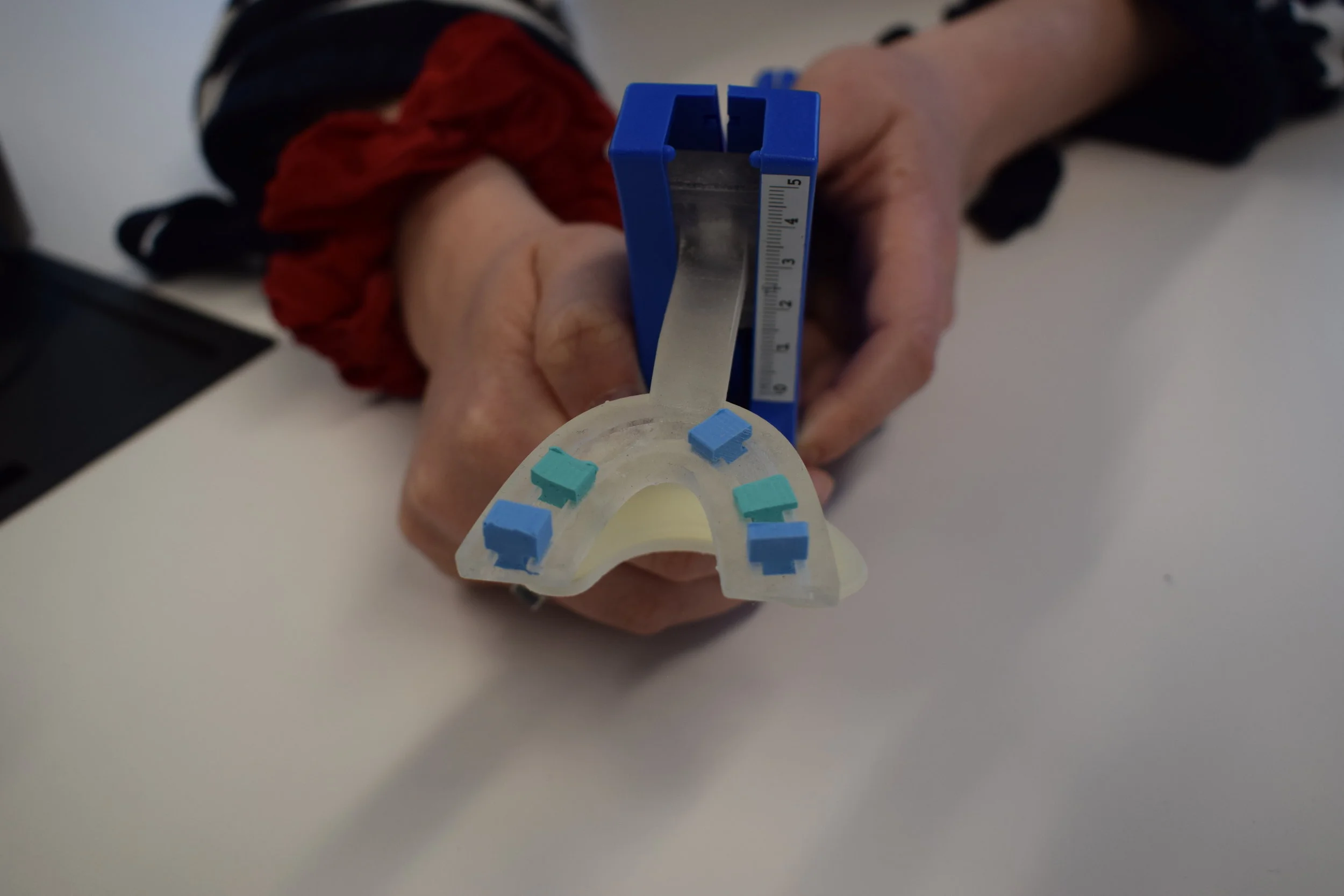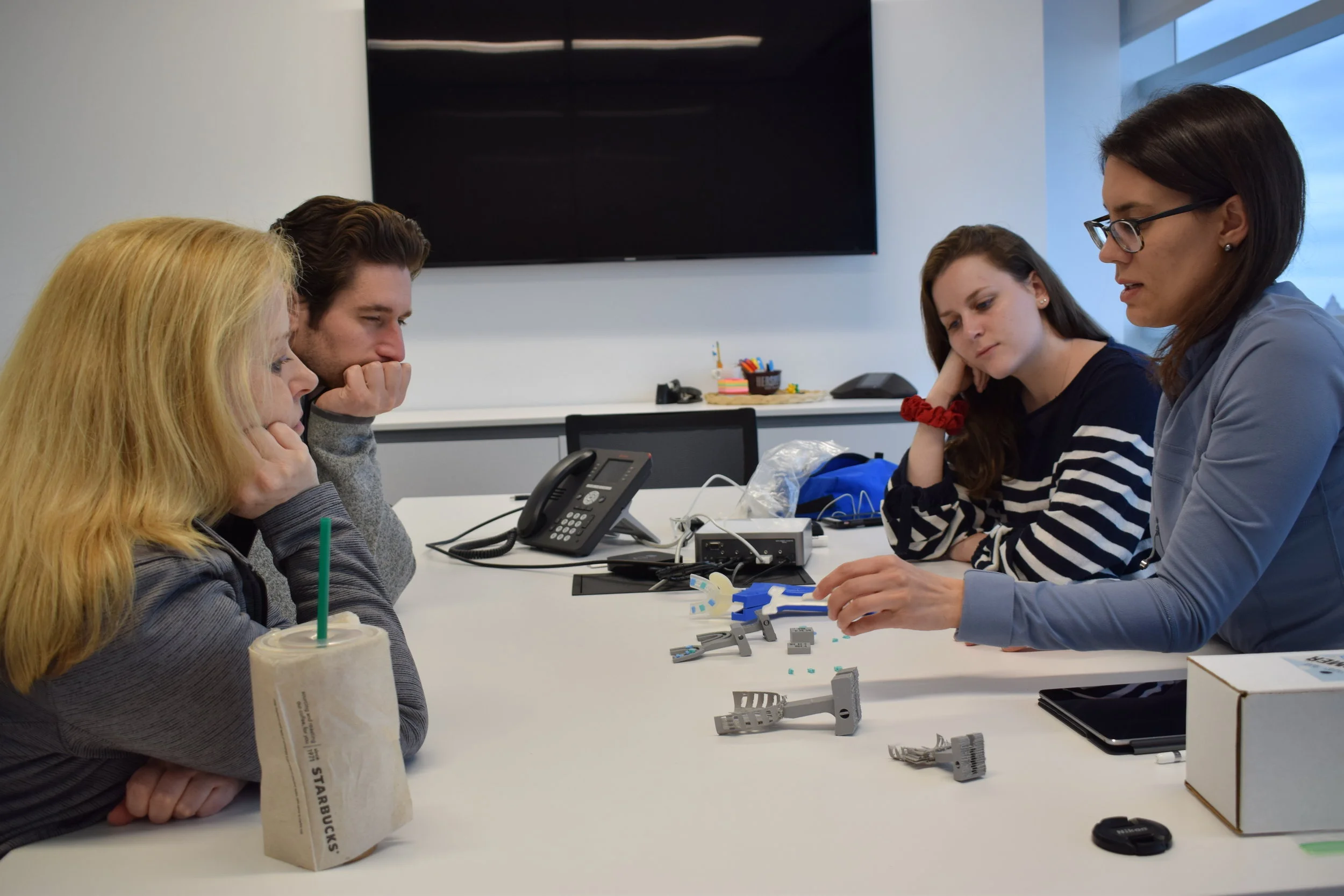Therabite Redesign for Treating Trismus
3D ModellinG, industrial design, UX REsearch
🛠: User Research, Rhino
💁♂️: Laura Ceccaci, Anna Dailey
⌛: 8 weeks
Through a graduate design class, I worked with Anna and Laura under Dr. Mike Tecce, a Penn Medicine Plastic Surgery resident, and the Children’s Hospital of Philadelphia on ways to improve care for pediatric patients with trismus. Read the full case study here.
Ask
The cheapest and most flexible trismus treatment is the Therabite, but it is expensive and limited for patients with irregular dentition, narrow range of motion and eccentric jaw rotation.
We decided to redesign the Therabite. User research gave consistent conclusions. The redesign was split into dividable chunks to be passed on.
Insight
The bite plate was priority: it was the most unpleasant part and, when made customizable, it would be the most impactful in the shortest time frame.
For even spread of pressure, our design needed to be customizable. The bad user experience was due to lack of modularity. For pediatric use, the materials needed to be softer.
Solution
Our two prototypes are a fully customizable modular kit with a sliding track and another T-shaped plate of foam core.
We designed the parts in Rhino and 3D printed them with dental resin. The gummies were cast in silicone. The parts were then handed off for testing with live patients at the hospital, and Laura continued with the project.
This was before my graphic design days, so you can see the text isn’t aligned…
“This is phenomenal - it’s more than anyone else in the country has done to solve this problem.”








